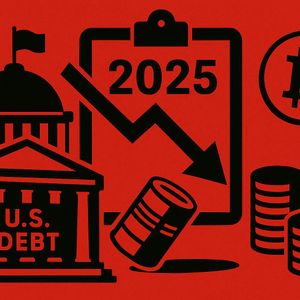The State of US Debt Refinancing in 2025: Can-Kicking, Short-Term Risk, and Crypto Market Implications
3 min read
The State of US Debt Refinancing in 2025: Can-Kicking, Short-Term Risk, and Crypto Market Implications 1. Progress on US Debt Refinancing: How Much Is Done and What Remains As of mid-July 2025, the United States is navigating through one of the largest debt refinancing cycles in its history. For 2025, approximately $9.2 trillion in federal debt is due for refinancing—a figure that amounts to nearly a third of all outstanding US government debt and about 30% of GDP. Completed Refinancing (Jan–Jun 2025): Around $5 to $6.5 trillion of this year’s maturing debt has already been refinanced. This covers close to 55–70% of the total schedule, reflecting the typical front-loading strategy of Treasury auctions in the year’s first half. Outstanding Refinancing (Jul–Dec 2025): An estimated $2.5 to $4 trillion remains to be rolled over by year-end. The Treasury will continue with regular auctions, but the bulk of the work—especially the spike in T-bill issuance—has set the tone for the remainder of the year. Year Total Due (USD Trillions) Already Refinanced Remaining 2025 9.2 5–6.5 2.5–4 2. The Short-Term T-Bill Strategy: Kicking the Can Down the Road Heavy Reliance on Short-Term Bills A defining feature of this refinancing round is the Treasury’s dependence on short-term Treasury bills (T-bills) —those maturing in one year or less. While the goal of extending average maturity persists, the majority of 2025’s refinancing has been done via T-bills instead of longer-dated bonds. Estimated Share: About one-third of 2025 maturities originated as T-bills. Most new issuance has focused on instruments with maturities of 13, 26, or 52 weeks. Market Appeal: T-bills are attractive during uncertain or volatile times because they offer flexibility and are in high demand, but this has consequences. Risks: Larger Refinancing Wall in 2026 This tactic does not solve the long-term problem but simply delays it —a classic case of “kicking the can down the road.” By rolling over maturing debt with even more short-term debt, the Treasury ensures that 2026’s refinancing wall will also remain large , with about $7.6 trillion in debt coming due next year. The increased use of short-term maturities amplifies exposure to interest rate hikes. If interest rates rise, future rollovers will be at higher costs, straining the budget and potentially forcing difficult fiscal adjustments. Short-term refinancing creates frequent market risk events. Any disruption in Treasury markets—political standoffs, rate spikes, or liquidity crunches—could pose systemic risks to both the government and broader financial markets. 3. How Debt Refinancing Tactics May Impact the Crypto Market Macro Market Spillovers Volatility in Rates and Yields: Reliance on short-term debt makes Treasury yields more sensitive to policy shifts or market jitters. Sudden increases in government yields or failed auctions could spark capital flight from traditional assets, occasionally spilling over into higher demand for crypto as a hedge . Dollar Confidence and Alternatives: Aggressive short-termism raises questions about long-term fiscal stability and could negatively affect global confidence in the US dollar. Events that threaten “safe haven” status for Treasurys often lead some investors to diversify into non-sovereign assets— notably Bitcoin and major cryptocurrencies . Risk-On/Risk-Off Moves: In scenarios where government fiscal health deteriorates or there is fear of US debt volatility, crypto assets may see speculative inflows as alternative or “risk-on” stores of value. However, crypto markets may also be hit by liquidity shocks if a crisis in Treasurys sparks a broad risk-off move where investors scramble for cash. Potential Outcomes to Watch Sharp Rate Increases: Could fuel a crypto rally as investors flee future inflation and currency debasement fears. Treasury Market Stress: May initially cause volatility across all assets—including crypto—but could ultimately drive renewed interest in decentralized stores of value. Policy Uncertainty: Heavy-handed or unpredictable moves (e.g., abrupt Fed changes or rate policies) may heighten appeal for assets outside the traditional financial system. Conclusion The US approach to refinancing this year’s vast debt wall—by focusing on short-term T-bills—offers flexibility but perpetuates fiscal risk, leaving a larger challenge for 2026 and beyond. These decisions reverberate beyond the Treasury market, with potential to shake the confidence in traditional financial assets and spur activity in crypto markets as investors seek out alternative stores of value.

Source: Coinpaprika





